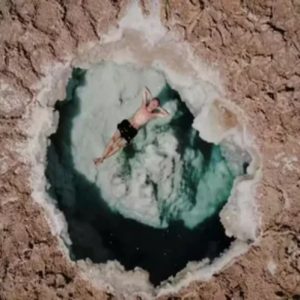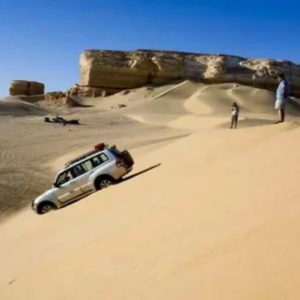
I. Introduction
II. History of Siwa Oasis
III. Geography and Climate
IV. Culture and Traditions
V. Top Attractions and Activities
VI. Accommodation and Dining Options
VII. Getting to Siwa Oasis
VIII. Conclusion

I. Introduction:Nestled in the Western Desert of Egypt, Siwa Oasis is a serene and tranquil escape amidst the vast expanse of the Sahara. As one of the most remote and isolated destinations in the country, it offers a unique cultural heritage, natural springs, salt lakes, and breathtaking landscapes, making it an ideal destination for travelers seeking an authentic and unforgettable experience.

Siwa Oasis boasts a rich history that dates back to ancient times. Its earliest recorded mention is found in the ancient Egyptian Book of the Dead, where it is referred to as the “Island of the Blessed”. Over the centuries, the oasis has been a hub of trade and commerce, linking the Mediterranean coast with the African interior. It also provided a haven for refugees, including Pythagoras, the Greek philosopher, and mathematician, who sought sanctuary in the oasis in the 6th century BC.

Siwa Oasis was also a significant religious center for the god Amun, and the Temple of the Oracle was one of Ancient Egypt’s most important religious sites. The temple was renowned for its oracular consultations, where priests would interpret dreams and give counsel to the pharaohs. Although the temple is now in ruins, visitors can still explore the remnants of the sanctuary, the main hall, and the court.

Siwa Oasis is situated in the Western Desert region of Egypt, about 50 km east of the Libyan border. It is a vast, shallow depression in the desert, spanning an area of about 80 km long and 20 km wide. Surrounded by sand dunes, rocky hills, and salt flats, Siwa Oasis has a unique and surreal appearance.
The climate in Siwa Oasis is arid, with sweltering summers and mild winters. During the summer months, temperatures can soar up to 50 °C (122 °F), so it is best to visit during the cooler winter season, from November to February.

The Swans, as the inhabitants of Siwa Oasis are known, have a distinct culture and heritage that has been shaped by their isolation from the rest of Egypt. They speak a language that is distinct from Arabic and is believed to be related to the Berber languages of North Africa. They also have a unique dress code, which includes a white robe called a jellabiya and a headscarf.

The Swans are renowned for their hospitality and their respect for their cultural heritage. They are also skilled craftsmen, producing intricate silver jewelry, embroidered textiles, and woven baskets. Visitors can explore the local markets and shops to see these traditional crafts and support the local economy.

V. Top Attractions and Activities:
Siwa Oasis offers a wealth of natural and cultural attractions, making it a popular destination for tourists. Here are some of the top attractions and activities to enjoy:

In addition to the Shali Fortress, there are many other historical sites to visit in the area, such as the Temple of Amun, which was built in the 25th dynasty of Ancient Egypt, and the Tombs of the Nobles, which contain the remains of local dignitaries from the Pharaonic period.

The Shali Fortress and the surrounding area are also popular for outdoor activities such as hiking, camel riding, and sandboarding. Visitors can explore the nearby desert and enjoy the stunning views of the Sahara, or take a dip in the hot springs that are scattered throughout the oasis.

Overall, the Shali Fortress and the Shali village offer a unique glimpse into the rich history and culture of Egypt and are a must-see destination for anyone interested in ancient civilizations and outdoor adventures.